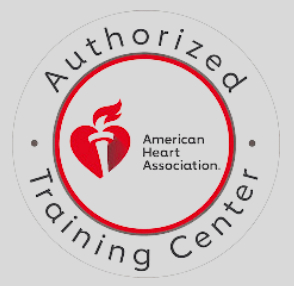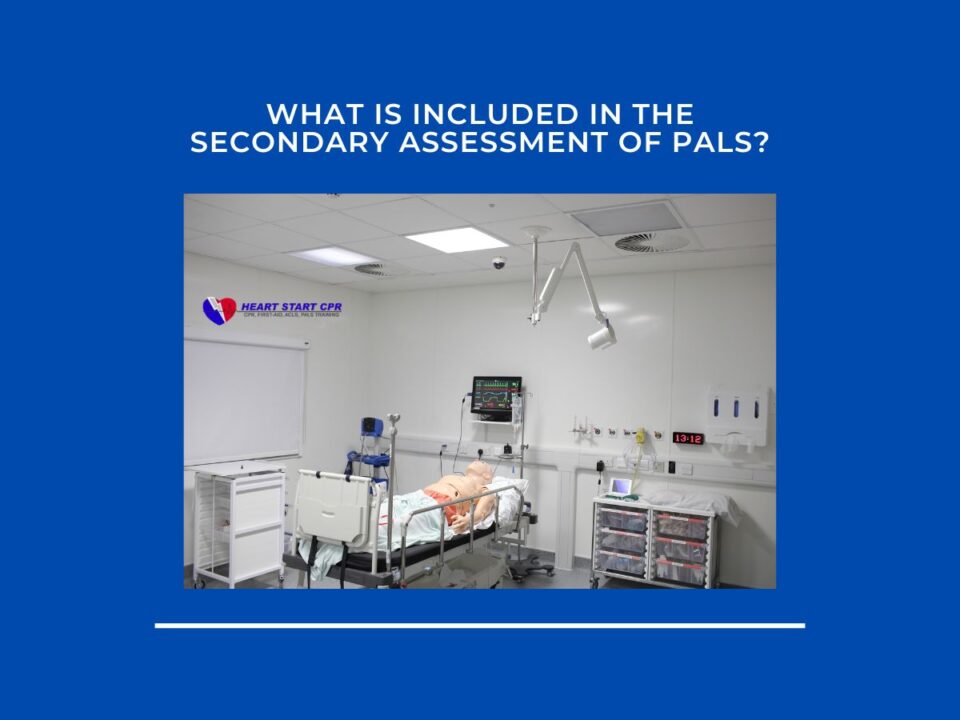
What is the Main Determinant of EtCO2 During CPR?
May 23, 2024
When to Perform CPR?
June 4, 2024Table of contents
You can achieve a high chest compression fraction by compressing the chest at a rate of 100-120 times per minute to a depth of at least 2 inches but no more than 2.4 inches for an adult victim, as recommended by the American Heart Association. Be sure to allow the chest to fully recoil after each compression to maximize blood flow and oxygen delivery to the heart and vital organs.
Achieving a high Chest Compression Fraction (CCF) is crucial in the successful resuscitation of a patient experiencing cardiac arrest. The American Heart Association AHA emphasizes the importance of high-quality cardiopulmonary resuscitation CPR in increasing survival rates from sudden cardiac arrest. To achieve a high chest compression fraction, rescuers must follow AHA guidelines for CPR.
In this blog, we’ll explore various techniques and best practices to help you achieve a high CCF during CPR. From minimizing interruptions to ensuring proper hand placement and utilizing advanced equipment, we’ll cover all the important aspects contributing to high chest compression fraction. Whether you’re a healthcare professional or a layperson trained in CPR, these insights will help you improve your CPR performance and potentially save more lives.
Understanding Chest Compression Fraction
Chest Compression Fraction (CCF) is a critical metric in cardiopulmonary resuscitation (CPR) that represents the proportion of time chest compressions are performed during a cardiac arrest resuscitation effort. It is calculated by dividing the total time spent delivering chest compressions by the total time of the resuscitation attempt, then multiplying by 100 to express it as a percentage.
CCF= (Total time of chest compressions/Total time of the resuscitation attempt) *100%
A high chest compression fraction is associated with better patient outcomes, as continuous and effective chest compressions are crucial for maintaining blood circulation to vital organs during cardiac arrest. High CCF targets are typically above 80%. This ensures minimal interruptions in compressions, which helps to maximize the chances of survival and recovery. The emphasis on maintaining a high CCF underscores the importance of efficient CPR techniques and minimizing pauses for activities such as ventilation, defibrillation, or rhythm analysis.
Why is a High Chest Compression Fraction Important?
Research has consistently shown that achieving a high CCF, or minimizing interruptions to chest compressions, is directly linked to improved survival from cardiac arrest. Here are several reasons why maintaining compressions is so vital:
- Increases Blood Flow to Vital Organs: Chest compressions pump blood to the heart and brain by artificially maintaining minimal blood pressure during cardiac arrest. More time spent compressing means more blood flow reaching these vital organs.
- Improves Survival Rates: Numerous studies have found a strong, direct correlation between CCF and survival from cardiac arrest. For every 1% increase in CCF, survival rates increase by about 2-3%.
- Reduces Interruptions: Long pauses without compressions diminish the efforts of previous compressions. Minimizing these interruptions is key to high-quality CPR.
- Follows Resuscitation Guidelines: The AHA guidelines clearly state that maintaining chest compressions is a priority, as interruptions can cause blood pressure to fall rapidly. A CCF ≥60% complies with these recommendations.
- Easier for Bystanders: Simplifying CPR for laypeople to just compressions alone, without ventilations, has achieved higher CCFs that translate to increased survival.
What are the Factors Influencing CCF?
Maintaining an optimal Chest Compression Fraction is crucial during cardiopulmonary resuscitation as it directly impacts the likelihood of successful resuscitation. The more the CCF, the more effective the circulation and the better the chances of successful resuscitation. Several factors influence Chest Compression Fraction. Each factor plays a significant role in determining the quality of CPR delivered. Understanding and addressing these factors are essential for rescuers aiming to maximize CCF and improve patient outcomes. Let’s explore these factors in detail:
Pauses for Ventilation
If there are any Interruptions in providing breaths, then it can reduce CCF. If the rescuer can minimize the duration and frequency of ventilation pauses, then it helps maintain a higher CCF. Using advanced airway devices like supraglottic airways or endotracheal tubes can help because they allow you to keep doing chest compressions while giving breaths. This way, you reduce interruptions and make CPR more effective.
Defibrillation Pauses
The time taken to deliver shocks with a defibrillator can lower CCF. To keep interruptions short, it’s important to coordinate efficiently and perform defibrillation quickly. Using automated external defibrillators (AEDs) that charge fast and provide clear voice prompts can help speed up the process, minimize pauses, and improve overall CCF.
Rhythm Analysis
Pauses to check the heart rhythm can lower the Chest Compression Fraction (CCF). To keep these pauses short, it’s crucial to assess the rhythm quickly and efficiently. Using protocols that allow for rhythm analysis while chest compressions continue, like the “pit-crew” approach, can help reduce interruptions. This way, you can maintain continuous compressions and optimize CCF.
Fatigue of Rescuers
When rescuers get tired, their compressions can become less frequent and less effective, which leads to longer pauses. To keep compressions strong and steady, it’s important to regularly switch out the person doing them. This way, everyone stays fresh, and the quality of CPR remains high.
Training and Experience
Well-trained and experienced rescuers are typically more efficient at minimizing pauses. This efficiency helps improve the Chest Compression Fraction (CCF) and overall effectiveness of CPR.
Equipment Availability and Use
The presence and use of automated CPR devices can help maintain consistent compressions without interruption, thus improving CCF. These devices provide reliable support, especially in high-stress situations, ensuring that CPR efforts are sustained and effective.
Patient Movement and Transport
When moving or transporting a patient, there’s a risk that compressions might stop, which can lower the Chest Compression Fraction (CCF). It’s important to handle the situation efficiently and try to avoid interruptions as much as possible. Keeping things smooth during transportation ensures that CPR stays effective and gives the patient the best chance of recovery.
Environmental Factors
Things like tight spaces, loud noises, and other environmental conditions can impact how well CPR works and, in turn, the Chest Compression Fraction (CCF). Creating the right environment—quiet, organized, and with enough space—can make a big difference in how effective CPR is and how well the patient responds.
What is the Proper Technique for High-Chest Compression Fraction?
Proper technique is very important in achieving a high chest compression fraction during CPR. The effectiveness of CPR relies heavily on the quality of chest compressions and the coordination of various tasks involved in the resuscitation effort. By adhering to established protocols and utilizing the best practices, rescuers can optimize CCF and improve the chances of successful patient outcomes. Let’s explore the key components of the proper technique for achieving a high CCF:
1. Minimize Interruptions
To achieve a high Chest Compression Fraction (CCF) during CPR, it’s really important to keep interruptions to a minimum. This means working together smoothly to handle things like giving breaths, using the defibrillator, and checking heart rhythms without stopping compressions too much. Minimal interruptions lead to better blood flow, improved oxygen delivery to vital organs, and a higher chance of successful resuscitation.
Related: What is Recommended to Minimize Interruptions in Compressions?
2. Proper Hand Placement
Proper hand placement is crucial for effective chest compressions and achieving a high CCF. To do it right, place the heel of one hand in the center of the patient’s chest, on the lower half of the sternum. Put your other hand on top and interlock your fingers. Keep your arms straight and position your shoulders directly over your hands. This way, you can use your body weight to deliver strong and effective compressions.
3. Proper Compression Depth and Rate
When it comes to CPR, chest compressions are like the heartbeat of the rescue effort. They keep the blood pumping and oxygen flowing to the brain and heart. So, when you’re on compression duty, aim to go deep, about 2 inches for adults, and keep up a steady rhythm, around 100 to 120 compressions per minute. This way, you’re ensuring that blood keeps flowing to all the vital parts, giving the person the best chance of coming back strong.
4. High-Quality Ventilation
Effective ventilation plays a crucial role in CPR, especially when rescue breaths are included in the protocol. Rescuers should deliver breaths quickly and efficiently. So, when you’re giving breaths, make sure to do it fast and with purpose, watching for that chest rise with each one. If you have access to advanced airway devices, utilize them and follow recommended ventilation techniques to help maximize oxygenation and minimize interruptions in chest compressions.
5. Effective Team Coordination
When it comes to CPR, everyone is putting on their efforts to save a life. Teamwork is key in such a situation. Each person has their part to play. So, before you start, make sure everyone knows their role. Whether you’re performing chest compression or ventilation, every role is crucial. By working together smoothly, you can keep interruptions to a minimum and keep CPR quality high from start to finish. Hence, the team needs to communicate clearly and give it all as a team for successful coordination and high CCF.
6. Role Rotation
When you’re in the middle of CPR efforts, it’s important to keep the energy up and the performance strong. That’s where role rotation comes in. Every couple of minutes, switch up who’s doing what. This way, everyone stays fresh and focused, and there’s always someone ready to jump in with full energy. The team needs to keep the momentum going and ensure those chest compressions never miss a beat. So, when you’re on the team, be ready to switch it up and keep the rhythm going strong to achieve a high-chest compression fraction.
7. Regular CPR Training and Practice
It is essential to stay updated with your CPR skills. That means you must keep up with your training and practice sessions to sharpen your knowledge and techniques when needed. So, make sure to attend your CPR training sessions regularly. Such regular training can help you to come up with solutions when there are different scenarios. It will help you to jump into action, be confident, and be ready to deliver high-quality CPR.
8. Use of Feedback Devices
During CPR, using real-time feedback devices can be super helpful. These devices give you instant information on stuff like how deep your compressions are, how fast you’re going, and if you’re letting the chest recoil properly between compressions. So, when you’re doing compressions, keeping an eye on these devices will tell you if you need to adjust your technique to make sure you’re doing the best compressions possible and getting the most out of each one. That way, you can bring out the best possible outcomes in cardiac emergencies.
Related: Which Type of Victim Requires High-Quality CPR?
9. Continuous Evaluation
Assessing how you’re doing during CPR is super important. After each CPR session, rescuers need to take a moment to debrief with their team. The team needs to look at how things went, check out any statistics or data they got on how well you did, and talk about what you can do better next time. It’s better to analyze performance metrics and discuss strategies to enhance CPR quality and maintain a high CCF in future scenarios.
Learn How to Achieve a High Chest Compression Fraction Today!
If you want to maximize your CPR effort, apply the technique we’ve outlined in this blog. By focusing on maintaining continuous chest compressions, you can significantly improve the chances of a successful resuscitation. Remember, every second counts during CPR, and keeping interruptions to a minimum is crucial.
If you want to acquire high-quality CPR or get better at CPR, then join CPR classes at Heart Start CPR in San Francisco, Bay Area. At Heart Start CPR, we provide top-notch CPR training in San Francisco. We help you with the skills and knowledge needed to perform high-quality CPR. But there’s more. Our comprehensive training programs cover all aspects of achieving a high Chest Compression Fraction (CCF) and much more. Join us to refine your CPR skills and make a real difference in emergency situations.
FAQS on High Chest Compression Fraction
What If Interruptions Are Needed for Tasks Like Defibrillation?
It is recognized that occasional pauses will be required for critical interventions like shock delivery or establishing an advanced airway. The guidelines do not mandate never pausing – just to minimize unnecessary or prolonged interruptions as much as possible. The goal is to resume compressions promptly after any clinically indicated cessations.
How Long Should CPR Continue if CCF is Suboptimal?
There is no definitive duration that CPR should continue if the achieved CCF is less than 60%. Rescuers should make every effort to improve the quality and fraction of compressions with coaching, switching providers, or other strategies. However, high-quality compressions remain the priority even if the achieved CCF alone is not ideal. Abandoning resuscitation should rely on the overall clinical assessment and circumstances per standard guidelines.






